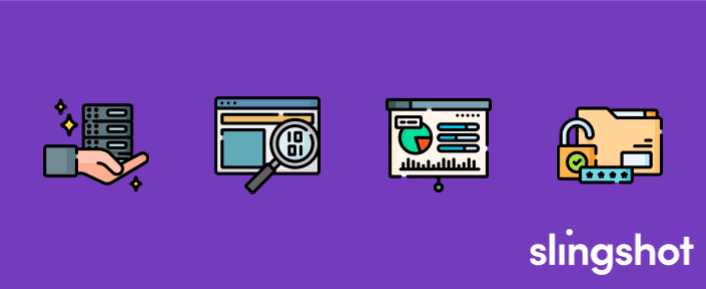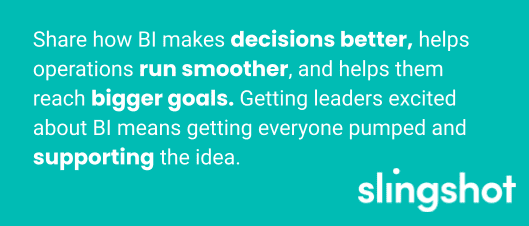Staying ahead in business isn’t a sprint; it’s an all-out marathon. As you navigate the intricate paths of growth and success, one critical teammate emerges: Business Intelligence.
But how does BI help you in the race for success? Today, we’ll look at how business intelligence will do more than just get you to the finish line: how BI can help you, key components of business intelligence, AI’s Impact on it, and strategies that can help you be successful.
Summary
- Business Intelligence analyzes various aspects of business, including sales performance, customer behavior, and production efficiency, facilitating informed decision-making for business growth.
- AI enhances BI by automating tasks and predicting outcomes, taking data analysis to the next level.
- To maximize the benefits of BI, it’s crucial to set clear goals, manage data effectively, and provide comprehensive training and support throughout the organization.
The Role of Business Intelligence
Business Intelligence, or BI, provides insights into your business operations and customer preferences. With BI, you can make informed decisions and optimize your strategy for long-term success.
Providing Insights into Business Operations
To stay successful, it’s essential to have a good understanding of how your business is doing. Business Intelligence helps you get a clear picture of your day-to-day activities. You can see how sales are performing, how efficient your production is, and where you need to improve. BI can also help you know what your customers are doing. You can learn about their preferences, buying patterns, and feedback to improve their experience and keep them returning.
Enabling Data-Driven Decision-Making
Business Intelligence tools help decision-makers transform complex data sets into valuable insights. With BI, you can analyze real-time data and use predictive analytics to anticipate what comes next. BI software encourages cross-functional collaboration, breaking down communication barriers for a more comprehensive approach to decision-making.
Enhancing Competitive Advantage through Informed Strategies
Making strategic decisions is important, but making great ones is everything. BI software can help businesses by providing insights into market trends, competitor performance, and new opportunities. This intelligence can help you adjust your strategies to stay ahead of the competition. Being agile is vital to staying competitive in today’s fast-paced business environment.
Key Components of Business Intelligence
As you can imagine from what you just read, BI requires a lot of Data. Business Intelligence starts by gathering up-to-date data from databases, APIs, spreadsheets, and more. BI software can then provide a bird’s eye view of your business, keeping a close eye on data and flagging any issues. Let’s look at the three main components of Business Intelligence.

Data Collection and Integration
To get the most out of BI, you must gather as much data as possible and ensure it’s accurate and up-to-date. BI systems can collect data from various sources, like databases, APIs, spreadsheets, etc. This can give you a good overview of everything that’s going on in your business. The data integration process is ongoing, so you’ll always have the latest info at your fingertips. This is super important because you can respond quickly to any changes or issues.
Data Analysis and Reporting
Business Intelligence involves analyzing and reporting on data to find patterns and trends. BI software uses statistical techniques and machine learning (more on that in a bit) to uncover insights. Custom reports can be created for different people within a company, while ad hoc querying allows you to explore data in real-time. And analysis is only good if the data is; BI software should also be set to flag up any problems they find. That way, you can be sure that the insights you’re getting are reliable.
Data Visualization for Easy Interpretation
Data visualization is super vital in making data accessible to everyone. BI software often has interactive dashboards that show essential metrics and KPIs in a visually appealing format. These dashboards help you see how things are going at a glance and let you look at specific areas for more detailed analysis.
Data Accessibility and Collaboration
It’s crucial for your BI solution to provide access to business insights for all interested business leaders. This will tear down silos and help to provide a more holistic view of the organization, enabling all to collaborate together in the future. Accessibility to information across all common devices (e.g., laptops, tablets, phones) is also very important for leaders on the go.
Business Intelligence software uses charts and graphs to make numeric data easier to understand. You might see a bar chart showing sales trends or a pie chart showing market share. Visuals help make complex problems more straightforward to understand.
AI’s Impact on Business Intelligence
Let’s address the elephant in the room; much of what we’ve discussed sounds like AI tools. And you’d be right; Business Intelligence is constantly evolving, and with AI in the mix, it’s brought a new level of possibilities. AI gives BI superpowers by adding advanced features beyond traditional data analysis. In this section, we’ll look at how AI has recently transformed BI and its many ways of improving decision-making processes.
Automation and Predictive Analytics
AI can help you move faster and better. For example, it can automate data processing tasks, which means it can quickly turn raw data into valuable BI insights. That means making decisions faster and focusing on more important things. Also, AI can analyze past data to predict future trends accurately. This helps you plan and make better decisions to take advantage of new opportunities and minimize risks.
Let’s say a company that deals with shipping could use AI to quickly go through all the data about said shipments and find patterns that show when there might be a delay. With this knowledge, the company can make changes to prevent late shipments and keep their customers happy.

Cognitive Insights
AI can help BI systems understand data like never before. It goes beyond fundamental analysis to better understand complicated patterns and relationships in the data. Plus, it doesn’t just look at the numbers – it also considers everything else it has access to about your business. This means that decisions influenced by AI insights are more relevant and higher quality.
AI can analyze sales data, social media trends, and local events to predict demand spikes. For example, it can tell when people might want to buy more sneakers because there’s a big running event coming up in that area. By knowing this, stores can make sure they have enough sneakers in stock and can advertise them better, leading to higher sales and customer satisfaction.
Natural Language Processing (NLP) and BI
By integrating NLP, users can talk to BI systems in plain language, simplifying data querying and making it more user-friendly. This means anyone can access relevant data within your organization, regardless of technical knowledge. Also, NLP features allow BI software to create stories from data, which is another tool to make data easier to understand. This narrative approach makes complex data accessible to many, promoting a shared understanding of insights.
A healthcare provider could use an NLP-enabled BI tool that lets staff ask questions about patient data in natural language. This makes it easier and faster for them to make clinical decisions without having to be tech wizards.
Machine Learning Algorithms in BI
Business Intelligence powered by machine learning algorithms is incredible at spotting patterns and identifying trends or oddities in large datasets. This analytics capability helps your business get a better idea of what’s really going on. With machine learning, BI systems can keep improving and evolving over time. They fine-tune their algorithms as they process more data, making insights more accurate and useful.
Another example: an online store could use machine learning to figure out what its customers like and what they don’t. They could then predict what users might want to buy in the future and use that info to improve how they advertise their products. Plus, they can manage their inventory better, selling more stuff and wasting less.
Strategies to Make Your BI Plan Successful
Starting your Business Intelligence journey is more than just getting a shiny new tool; it requires a strategic and all-inclusive approach to ensure success. Following the tips below can help you make your BI plan effective and provide a push for continuous growth.
Establish Clear Objectives and Goals
Make sure your BI objectives align with your organization’s overall strategic vision. This way, you can be sure that your BI efforts contribute significantly to your business outcomes.
And remember to make SMART objectives. No, we’re not talking about brilliant (although they should be that, too!). SMART stands for Specific, Measurable, Achievable, Relevant, and Time-bound. This will help you align your business goals to successfully implement BI efforts.
Comprehensive Data Governance
Having a solid plan ensures your data’s security, privacy, accuracy, availability, and usability. These policies should cover data quality, consistency, and security. This way, you can be confident that the data you’re using to make your BI reports is reliable and meets all the industry regulations.
Change Management Programs
When introducing BI software in your company, remember it’s a significant change. And change is challenging for businesses; preparing your employees for this shift is essential. Create change management programs that address their concerns and encourage your team to adopt the new tools.
It’s also crucial to involve your employees in the implementation process. Listen to their feedback, address their concerns, and make sure they get proper training and support during the transition. This way, they’ll feel more comfortable and confident using the new BI software.
Executive Education and Advocacy
Nothing kills a project faster than an out-of-the-loop exec. Make sure your entire C-suite understands how BI can help your business. Share how BI makes decisions better, helps operations run smoother, and helps them reach bigger goals. Getting leaders excited about BI means getting everyone pumped and supporting the idea.

Scalable and Modular Implementation
When implementing BI, it’s better to break it down into phases everyone can handle. This way, you can have a more focused and practical implementation with fewer disruptions. Also, prioritize the critical components of BI based on how they impact business goals. This ensures you can get the most value out of the implementation immediately.
Regular Performance Monitoring and Evaluation
And as we always say, tech is never a ‘set it and forget it’ solution. Keep tabs on your BI’s performance by setting up a monitoring system. Doing this regularly helps you spot areas where you’re doing well and need to improve. It’s important to periodically evaluate the effectiveness of your business intelligence plan to ensure that your strategies keep up with changes in your business and technology.
Conclusion
Business Intelligence helps you make smart decisions that will help your business grow by analyzing everything from sales performance to customer behavior and production efficiency. AI has taken BI to the next level by automating tasks and predicting outcomes.
To get the most out of BI, you must set clear goals, manage data carefully, and provide training and support to everyone in your organization. In conclusion, BI is essential for businesses that want to succeed in today’s data-driven world. It’s time to get on board to be first across the finish line! 🏁
Data + AI = Another Blog?

Written by: Savannah
Savannah is our one-woman marketing department. She posts, writes, and creates all things Slingshot. While she may not be making software for you, she does have a minor in Computer Information Systems. We’d call her the opposite of a procrastinator: she can’t rest until all her work is done. She loves playing her switch and meal-prepping.

Edited by: Chris
Chris has been in the technology space for over 20 years, including being Slingshot’s CIO since 2017. He specializes in lean UX design, technology leadership, and new tech with a focus on AI. He’s currently involved in several AI-focused projects within Slingshot.




